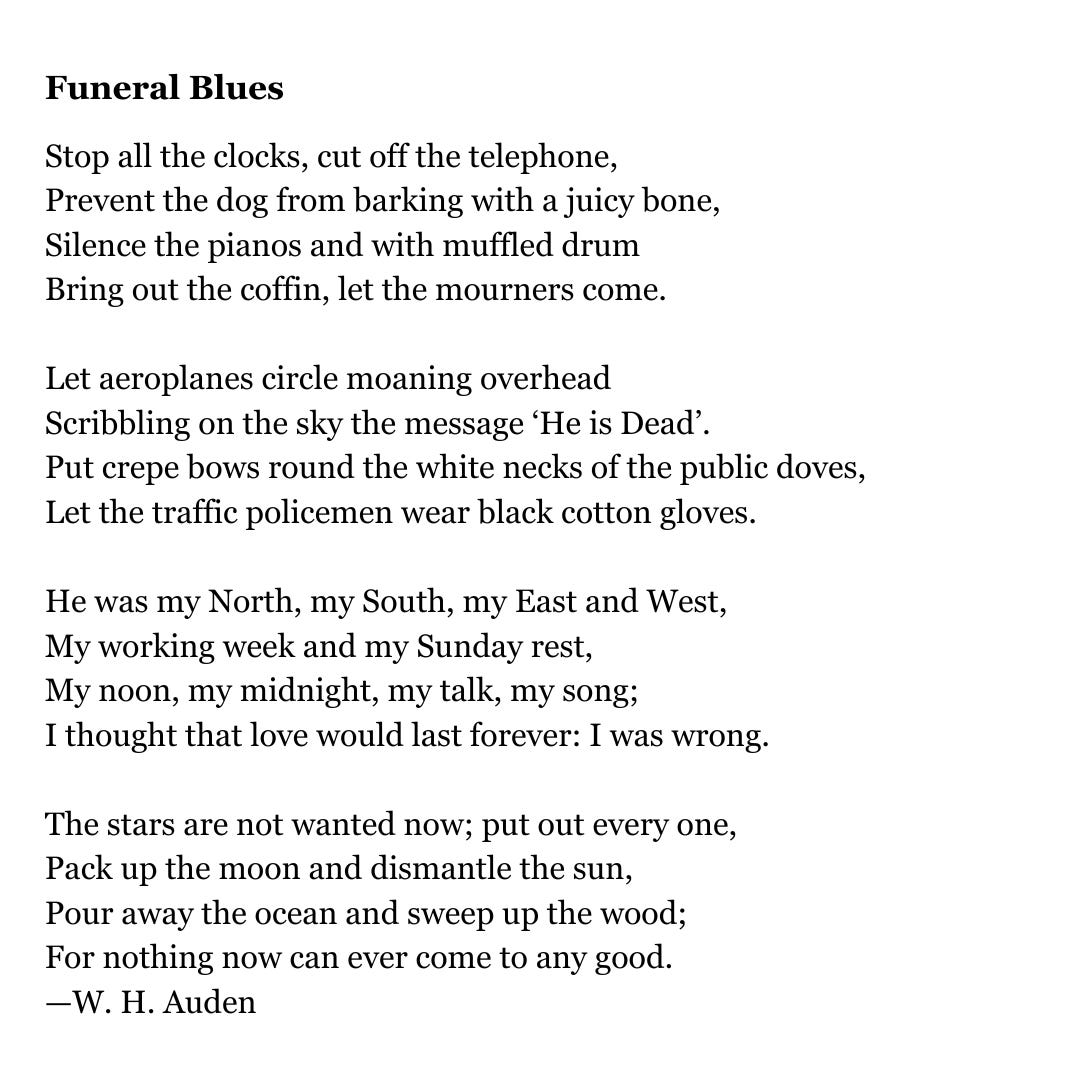A poet’s style is as unique as their fingerprint. From sharp, emotional verbs to wild, daring leaps reaching for the surreal, we all have a certain way we like to write. While some might love the order and arc of narrative poetry, others might like the untamed experimentation of language. Every poet comes to the page with different styles, strategies, and preferences.
On my best days (and in my best drafts), my writing is wild and loose, like driving windows down along the cliffy California coastline, hair messy in the hot August wind. This doesn’t mean I don’t have poems as tidy as a closet at boot camp or stark as a fertility clinic. This just means if you asked me my poetic default, I would not begin with the conventions of logic, even though I’ve come to value them too. While imagination and wildness are what thrill me, I’m always afraid that too much might take away from the structure and story of a poem.
A truly great poem is a well-balanced ecosystem. It is important that there is not too much or too little of one element. Too wild, and you might lose the reader’s focus, too sparse, and you might risk losing context, characters, and more.
In the essay “Four Poetic Temperaments and the Forms of Poetry” by Gregory Orr from the the book Poets Teaching Poets: Self and the World, Orr argues that every poem has four specific elements:
Story
Structure
Music
Wildness/Imagination
Story and structure are more confined aspects, with rules and framework. Whereas music and imagination are unconfined and limitless. A great poem has all four of these elements, giving poets clear criteria in which to examine their work.
Orr also goes on to argue that every poet defaults or even values one element more than the other. As an educator and editor, I work with a lot of poets who say, “I have this poem, I like it but something about it feels off.” The feeling that something is missing but they don’t know what.
Like a chef, The Four Temperaments allows poets the ability to taste a poem and ask what does this poem need more or less of? More salt? More flour? Too much garlic? Or rosemary?
The “Four Poetic Temperaments” gives us the ability to self-examine, to reach for areas of growth, and reflect on our innate writing style—to identify the four elements and reflect on how to balance them so one aspect doesn't overpower the others.
When editing a poem or giving feedback, I recommend using these four questions, based on the “Four Poetic Temperaments” by Gregory Orr, to guide your process.
What is the structure?
How does it echo content and emotion?
Is the structure needed?
Is it helping the poem? Hurting it?
How does it look on the page? Why?
What is the visual argument?
How do line breaks and white space inform readers?
What is the story being told?
Who is telling the story?
Why are they telling the story now?
Why is the story important?
Where does the story start?
Where is the action in the story?
Is there a resolution or open-ended?
Who is this story for?
What is the experience?
What is the emotion?
Where is the music?
Where does the language sing?
Where is the rhythm?
What is the rhyme?
Where does the poet add: alliteration, imagery, varied syntax?
Where is the wildness and imagination?
Where does the poet include imagination?
Where does the poet take risks? Language? Story? Structure?
Where are there elements of newness? Freshness?
Where are there opportunities for surrealism?
Want an example? Read “Funeral Blues” by W.H. Auden. Every single element of one of the four temperaments are at play, but none are too loud. Auden strikes a perfect balance of giving us a mix of each without one element overpowering the other.
Let’s break down the poem by each of The Four Temperaments:
Structure: The poem is divided into quatrains, which usually indicates a ballad. In the past, ballads were traditionally love songs. They also make for neat, tidy rhymes. If you look, the first stanza lives down here on earth and is rooted in the domestic. The second stanza takes place almost entirely in the sky or air. Heavy with birds, airplane messages, and even the hand signals of police driving through the air. The third stanza lives entirely in metaphor, the fourth stanza in the surreal.
Story: The poem is about the heart-wrenching and universal grief of losing someone who was your everything.
Music: There are so many places where this poem sings. The marching meter of the first stanza reminds us of the heavy footsteps, the solemn march of a funeral procession. The hard sounds, short and stucco, like the shock of death. When we move to the second stanza the grief sings through open-mouth vowels. Words like “aeroplanes,” “moaning,” and “overhead” all have an o sound, reminding us of a wail or howl. We have the alliteration, with “scribbling” and “sky,” and then the abrupt short sounds of “he is dead.” The rhyme of the third stanza moves toward song with a lyrical flow and music we feel compelled by.
Wildness/Imagination: This poem starts in the practical, domestic word. The simple acts of trying to escape the world. Taking the phone off the hook, stopping the dog from barking. It becomes more and more surreal, as each dove is adorned with a bow. Then we move towards the imagination of language through metaphor: the love being the speaker’s working week and song. In the fourth stanza, as if moving through the stages of grief, we see the world and all its logic falling apart, or at least the speaker denying the continuation of the world as they knew it. The speaker imploring to “pack up the moon and dismantle the sun.”
Funeral Blues has always been a poem I admired, but looking at it this closely, I’m even more impressed with Auden’s precision, emotion, and ability to shift us to different landscapes and realms.
So the next time you read a poem that knocks your socks off, ask yourself how each of the “Four Poetic Temperaments” is present. How did the poet create this ecosystem? What parts are at play and how? Or if you’re wrestling with a poem, ask yourself, “What temperament do I have too much? What temperament isn’t present enough?” This technique with accompanying questions will give you a clear, quick approach to reflecting on any poem.
More Yummy Stuff:
Create magical metaphors full of punch and power. On Jan 20th, I will be teaching The Magic and Mining of Metaphor with Write or Die magazine. Come. Play. I promise your metaphors will never be the same.
Interested in working with me to get feedback on your writing? In the new year I’m opening up three editing spaces to work one-on-one with poets or essayists looking to strengthen and sharpen their work for publication. More information on my website.
Which Poetic Tendency do you lean towards? Let’s chat in the comments.






Thanks so much for sharing! 🌈